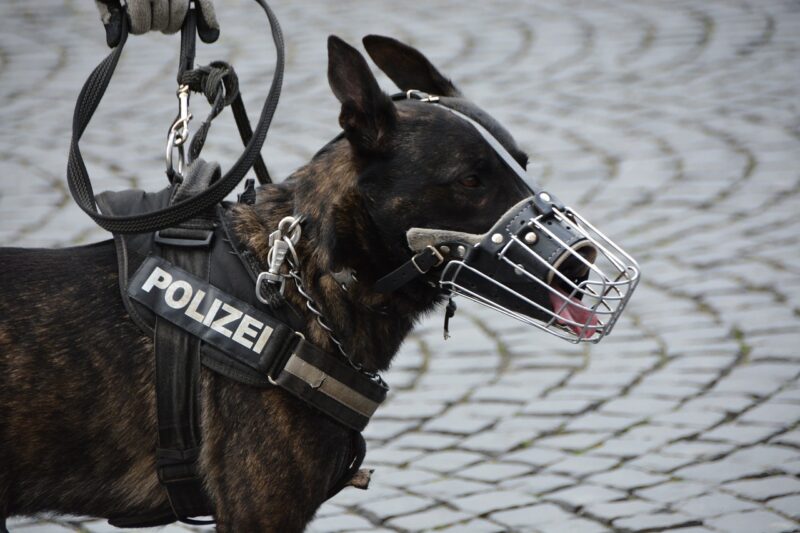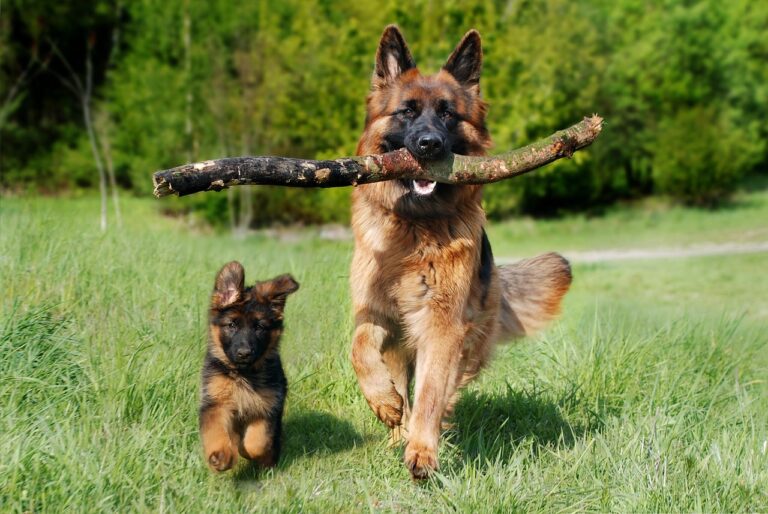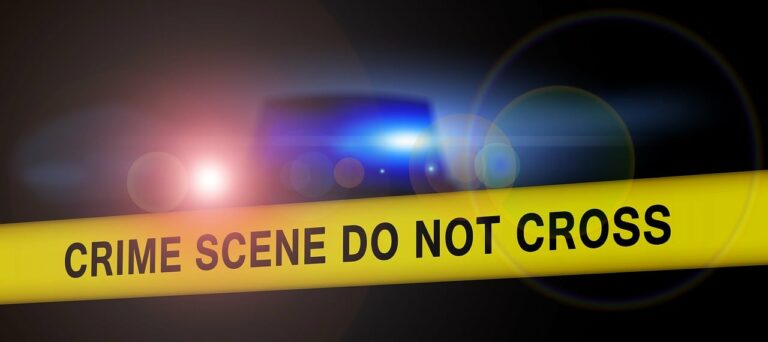How Animals Assist in Crime Scene Investigations
Crime Scene Investigations, often abbreviated as CSI, is a fascinating field that relies on countless tools and techniques to solve mysteries. But did you know that our furry, feathered, and even scaly friends can also play a significant role in helping crack cases wide open?
In this article, we’ll take a closer look at how animals assist in Crime Scene Investigations. From sniffer dogs detecting illicit substances to cadaver dogs finding missing persons and more. These unsung heroes of the animal kingdom have a paw in preserving justice.
Animals have long been our companions, but their extraordinary abilities often go unnoticed. When it comes to sniffing out trouble, dogs are the top dogs. Sniffer dogs, with their keen noses, are trained to detect drugs, explosives, and ammunition that might elude human senses. They’re not just man’s best friend; they’re also a detective’s secret weapon. In real-life crime-solving situations, these four-legged friends have proven their worth time and time again.
But it’s not just about drugs and explosives; animals play other critical roles too. Cadaver dogs, for instance, are trained to find human remains. Their incredible sense of smell helps locate missing persons and aids in solving homicide cases. These dogs provide closure to grieving families, offering solace in the darkest of times.
In the following sections, we’ll explore the lesser-known heroes in the animal kingdom. Such as birds, aquatic assistants, and insect informants, shedding light on their invaluable contributions to Crime Scene Investigation. So, buckle up, because it’s time to embark on a journey into the world of animal-assisted crime-solving.
Crime Scene Investigations: Canine Detectives
To begin with, sniffer dogs possess an olfactory sense that puts ours to shame. Their noses are finely tuned instruments, capable of detecting even the faintest whiffs of illicit substances like drugs and explosives. This heightened sense of smell, which is millions of times more sensitive than ours, makes them indispensable in the fight against crime.
The process of training sniffer dogs is both rigorous and rewarding. Puppies with the right temperament and eagerness to learn are selected for this important job. From there, they undergo intensive training to hone their detection skills. During training, they learn to associate specific scents with rewards, like treats or toys, turning their job into an exciting game.
Once fully trained, these canines are ready to hit the field alongside law enforcement officers. When they arrive at a crime scene, they’re not just another pair of eyes; they’re the first to sniff out potential evidence. Their noses can pinpoint the hidden stashes of drugs or uncover concealed explosives. It’s a powerful partnership between humans and canines, where their extraordinary abilities complement our investigative techniques.
In real-life cases, the results speak for themselves. Sniffer dogs have played pivotal roles in seizing illegal drugs at airports, preventing potential bomb threats, and aiding in the apprehension of criminals. Their contributions extend far beyond what human senses alone could achieve. So, the next time you see a sniffer dog at work, remember that they are not just pets; they are vital detectives working tirelessly to keep our communities safe.
How Canine Detectives Do It
Sniffer dogs’ remarkable ability to detect drugs, explosives, and ammunition hinges on their extraordinary sense of smell. Their noses are biological marvels, equipped with roughly 300 million scent receptors, compared to our mere 5-6 million. This vast difference in olfactory capacity allows them to discern odors at incredibly low concentrations, making them ideal for crime scene investigations.
When a sniffer dog is put to work, they utilize a simple but highly effective process:
1. Scent Discrimination: Sniffer dogs are trained to discriminate between various scents. This means they can distinguish the target odor (e.g., narcotics) from other competing scents in the environment.
2. Scent Location: Once they’ve identified the target odor, these canines follow their noses to the source. They use their acute sense of smell to trace the scent to its origin, whether it’s hidden within luggage at an airport or concealed in a vehicle.
3. Alerting the Handler: When they find the source, sniffer dogs employ a specific alert behavior, which could include sitting down, barking, or pointing with their nose. This signals to their handler that they’ve located potential contraband.
4. Reward-Based Training: Dogs are motivated to perform this task through positive reinforcement. When they successfully identify the target odor and alert their handler, they receive a reward, such as a treat or a favorite toy. This reinforcement strengthens their desire to continue the search for contraband.
The Most Commonly Used Canine Breeds for This Training
The choice of dog breeds for sniffer dog training is not arbitrary. It’s based on specific traits that make some breeds particularly well-suited for the job. The most commonly used breeds include:
- Labrador Retrievers: These friendly and intelligent dogs are known for their gentle disposition and strong work ethic. They are highly trainable and have an excellent sense of smell, making them ideal for sniffing out drugs and explosives.
- German Shepherds: Renowned for their intelligence and loyalty, German Shepherds excel in police and military work. Their versatility and keen sense of smell make them valuable assets in crime scene investigations.
- Belgian Malinois: Agile and highly driven, Belgian Malinois are often chosen for their relentless work ethic. They thrive in demanding environments and are frequently used in roles requiring exceptional scent detection.
- Springer Spaniels: These energetic and eager-to-please dogs have an excellent sense of smell and are often used to locate narcotics and explosives. Their smaller size can be advantageous in certain crime scene investigations.
Ultimately, the choice of breed depends on the specific needs of the law enforcement agency and the type of substances they are primarily focused on detecting. Each breed brings its unique strengths to the world of canine crime-solving, contributing to more effective crime scene investigations.

Cadaver Dogs in Crime Scene Investigations
In the realm of crime scene investigations, it’s not just about tracking down suspects and illicit substances. It’s also about providing closure to grieving families and solving some of the most perplexing mysteries involving missing persons and homicides. This is where cadaver dogs, with their remarkable abilities, come into play.
How Cadaver Dogs Contribute to Crime Scene Investigations
Cadaver dogs are a specialized type of sniffer dog trained to locate human remains, both fresh and decomposed. Their unique skill set is invaluable in situations where locating bodies or evidence is crucial for solving crimes. Here’s how they make their mark in crime scene investigations:
- Finding Missing Persons: One of the primary roles of cadaver dogs is to assist in locating missing individuals. Whether a person has gone missing in the wilderness, a disaster has occurred, or foul play is suspected. Cadaver dogs can quickly cover vast areas to pinpoint potential burial sites or locations where human remains might be concealed.
- Locating Homicide Victims: In homicide investigations, cadaver dogs play a pivotal role in uncovering evidence. They can identify hidden graves or areas where a body has been disposed of, even if the remains are well-concealed. This critical information aids law enforcement in building a case against perpetrators.
- Determining Time of Death: Cadaver dogs can also help forensic experts in determining the time of death. By sniffing out the presence of decomposed human tissue, they provide valuable clues about when a crime may have occurred.
- Bringing Closure: Perhaps the most emotionally significant contribution of cadaver dogs is their ability to bring closure to the families of missing persons. Finding a loved one’s remains, no matter how long it has been, can offer solace and a sense of finality to families.
In essence, crime scene investigations benefit tremendously from the incredible abilities of cadaver dogs. They provide answers in the darkest of circumstances, offering a glimmer of hope and justice to those affected by unsolved mysteries. The dedication and training of these remarkable dogs show their commitment to crime-solving efforts.
Avian Aids in Crime Scene Investigations
In the diverse toolbox of crime scene investigations, we find a surprising set of unconventional helpers: our feathered friends. Birds, specifically vultures and crows, have carved out their unique roles in aiding investigators, shedding light on crime scenes, and assisting in unexpected ways.

The Role of Avian Aids in Crime Scene Investigations
- Scavenger Specialists: Vultures, with their distinctive bald heads and keen eyesight, are nature’s cleanup crew. They have an incredible knack for finding animal remains and human remains. Their presence at a scene can indicate the presence of a carcass, potentially pointing investigators to an undisclosed crime scene. Their natural scavenging instincts can be an inadvertent but useful clue.
- Crow Commotion: Crows, highly intelligent and observant birds, often have a natural curiosity about unusual objects or disturbances. In urban settings, crows might gather around a crime scene, their cawing and agitation attracting attention. Police officers and forensic teams sometimes use this flapping behavior as an indicator, leading them to investigate further.
- Flyover Reconnaissance: Some law enforcement agencies have explored the use of trained birds, such as pigeons, for aerial surveillance. These birds can carry small cameras or sensors and fly over crime scenes, capturing images and data that might not be accessible by traditional means, providing a unique perspective from the skies.
Ethical Considerations and Limitations
While avian aids can offer valuable assistance, their use in crime scene investigations is not without ethical considerations and limitations:
1. Unpredictable Behavior: Birds can be unpredictable, and their reactions to crime scenes vary. While crows might be drawn to disturbances, vultures may not always be present when needed. Relying solely on avian cues can be unreliable.
2. Environmental Factors: Weather conditions and the presence of other wildlife can affect the behavior of bird aids. Rain, for example, may deter scavenging birds from approaching a crime scene.
3. Animal Welfare: The use of trained birds in surveillance must be carried out ethically and with a focus on the well-being of the animals involved. Careful consideration of their physical and emotional needs is essential.
In summary, avian aids, through their natural behaviors and unique capabilities, can provide valuable clues to crime scene investigators. While they may not be as predictable as their canine counterparts, their presence and actions have played a role in solving cases and expanding the toolkit of crime scene investigations. These feathered collaborators remind us that the world of forensic science is as diverse as the natural world itself.
Aquatic Assistance in Underwater Crime Scene Investigations
While land and air-based investigations are well-known, the mysteries that lurk beneath the water’s surface also require special attention. In the realm of underwater crime scene investigations, aquatic creatures like crabs and fish play a surprisingly vital role in unearthing evidence and solving submerged mysteries.
The Contribution of Aquatic Creatures in Underwater Crime Scene Investigations
1. Recovery of Evidence: When crimes involve bodies or crucial evidence submerged in water bodies like lakes, rivers, or oceans, aquatic creatures inadvertently assist in the recovery process. These creatures, including bottom-dwelling fish and scavenging crabs, feed on decomposing organic material. In doing so, they may uncover and scatter evidence, drawing investigators’ attention to critical areas.
2. Decomposition Timeline: Aquatic organisms contribute valuable information regarding the decomposition timeline of submerged bodies. The types of aquatic creatures present on or near a corpse can provide forensic experts with insights into how long the body has been underwater.
3. Evidence of Tampering: Changes in the underwater environment caused by human interference may also attract aquatic organisms. For example, illegal dumping of objects, such as firearms or stolen goods, can disrupt the natural ecosystem. In such cases, the presence of unusual objects or irregular disturbances can be signs of criminal activity.
Challenges Faced in Utilizing Aquatic Assistance
Despite their potential contributions, there are notable challenges when it comes to relying on aquatic creatures for assistance in underwater crime scene investigations:
1. Unpredictable Behavior: Aquatic creatures, including fish and crabs, are influenced by environmental factors, including water temperature and currents. Their behavior can be unpredictable, making it challenging to interpret their actions as straightforward evidence.
2. Environmental Variability: Underwater conditions vary greatly depending on the location and depth of the water body. Factors like low visibility, strong currents, and water chemistry can hinder investigations and limit the effectiveness of aquatic assistance.
3. Ethical Considerations: The use of aquatic creatures as forensic tools raises ethical concerns. Disturbing aquatic ecosystems or causing harm to marine life in the pursuit of evidence must be carefully weighed against the potential benefits to crime scene investigations.
In the fascinating world of underwater crime scene investigations, where murky depths hold untold secrets, the assistance of aquatic creatures adds another layer of complexity and intrigue. While their contributions are indirect and often accidental, even the most unexpected allies can help uncover the truth in the depths of aquatic mysteries.
The Role of Insects in Crime Scene Investigations
In the world of forensic science, it’s not just the animal kingdom’s larger members that lend a helping hand. Insects, often overlooked but incredibly valuable, provide investigators with a wealth of information about crime scenes.

The Crucial Role of Insect Informants
- Decomposition Clocks: Insects, especially flies and beetles, are nature’s cleanup crew when it comes to decomposing organic matter. When a body is left exposed, these insects arrive at the scene promptly. Forensic entomologists study their presence and life stages to estimate the time of death, referred to as the post-mortem interval (PMI). This information is invaluable in narrowing down when a crime occurred.
- Environmental Clues: Insects are highly sensitive to changes in the environment, including temperature, humidity, and the presence of chemicals. Different species of insects prefer specific conditions, and their presence or absence can indicate whether a body has been moved or if chemicals were involved in the crime.
- DNA and Toxicology Evidence: Insects can also carry genetic material from a crime scene. Traces of DNA or toxic substances found in their bodies can link them to specific locations or events, aiding in the identification of suspects and the reconstruction of the crime.
- Locational Indicators: The types of insects present and their life stages can provide clues about where a body was initially deposited or where a crime occurred. Some insects are highly specific to certain geographic regions, narrowing down potential crime scene locations.
The Precision of Forensic Entomology
Forensic entomology, the study of insects in legal investigations, is a precise science that requires expert knowledge. Forensic entomologists meticulously analyze insect specimens, recording details such as species, developmental stages, and environmental conditions to construct a timeline of events at a crime scene. This information can be pivotal in court, helping to establish alibis, confirm timelines, and support or challenge witness testimonies.
However, it’s important to note that the accuracy of forensic entomology relies on the proper collection and preservation of insect evidence. Mistakes in handling or analyzing these tiny informants can lead to misleading results. Therefore, law enforcement agencies must work closely with forensic entomologists to ensure that insect evidence is collected and processed accurately.
In conclusion, insects may be small, but their contributions to crime scene investigations are immeasurable. Their presence, behavior, and life cycles tell the story of a crime scene, helping investigators piece together the puzzle and bring perpetrators to justice. The world of forensic science owes a debt of gratitude to these humble insect informants.
Challenges in Animal-Assisted Crime Scene Investigations
While animals, birds, aquatic creatures, and insects offer invaluable assistance in crime scene investigations, the field is not without its challenges. Let’s explore some of these obstacles and the exciting developments that promise to enhance the efficacy of animal-assisted investigations.
- Training and Reliability: The training of sniffer dogs, cadaver dogs, and other animal assistants is labor-intensive and time-consuming. Ensuring their reliability in various real-world scenarios can be challenging.
- Environmental Factors: Weather conditions, terrain, and the presence of other animals can impact the performance of animal assistants. Extreme temperatures, for instance, can affect a dog’s ability to detect scents accurately.
- Ethical Considerations: The use of animals in investigations raises ethical concerns about their welfare and safety. Striking a balance between their well-being and their role in crime-solving is an ongoing challenge.
- Limitations of Animal Senses: While animals have remarkable senses, they are not infallible. They may miss scents due to contamination or interference, leading to potential false negatives in investigations.
Innovations in Animal-Assisted Investigations
Technology Integration: The integration of technology, such as drones and sensors, alongside animal-assisted investigations, enhances the speed and accuracy of locating evidence. Drones equipped with thermal cameras can complement sniffer dogs’ efforts in large areas.
Scent Detection Devices: Researchers are developing portable scent detection devices that can mimic the capabilities of sniffer dogs. These devices offer a consistent and reliable means of detecting scents without relying on live animals.
Genetic Analysis: Advancements in genetic analysis enable forensic experts to extract DNA and chemical information from trace amounts of biological material, reducing the need for invasive sampling from animals.
Cross-Species Collaboration: Scientists are exploring the possibility of cross-species communication to enhance collaboration between humans and animals. This involves developing technology that allows animals to convey specific information about their findings.
Artificial Intelligence and Machine Learning: These technologies are being harnessed to analyze vast amounts of data collected during crime scene investigations. AI-powered systems can assist in identifying patterns and anomalies that might elude human analysis
Ethical Guidelines: Law enforcement agencies and organizations are developing and implementing stricter ethical guidelines for the use of animals in investigations. These guidelines prioritize the well-being of animal assistants.
As we navigate the complex world of crime scene investigations, it’s imperative that we continue to innovate while respecting the animals and natural world that assist us. The challenges we face in utilizing animal collaborators are opportunities for growth and improvement.
Conclusion: A Testament to Unity
In the evolving landscape of crime scene investigations, the human-animal bond stands as a testament to unity in the pursuit of justice. As we look toward the future, let us cherish and nurture this unique connection between humans and animals. Through trust, loyalty, and compassion, this bond reinforces the idea that we are not alone in our quest to uncover the truth.







